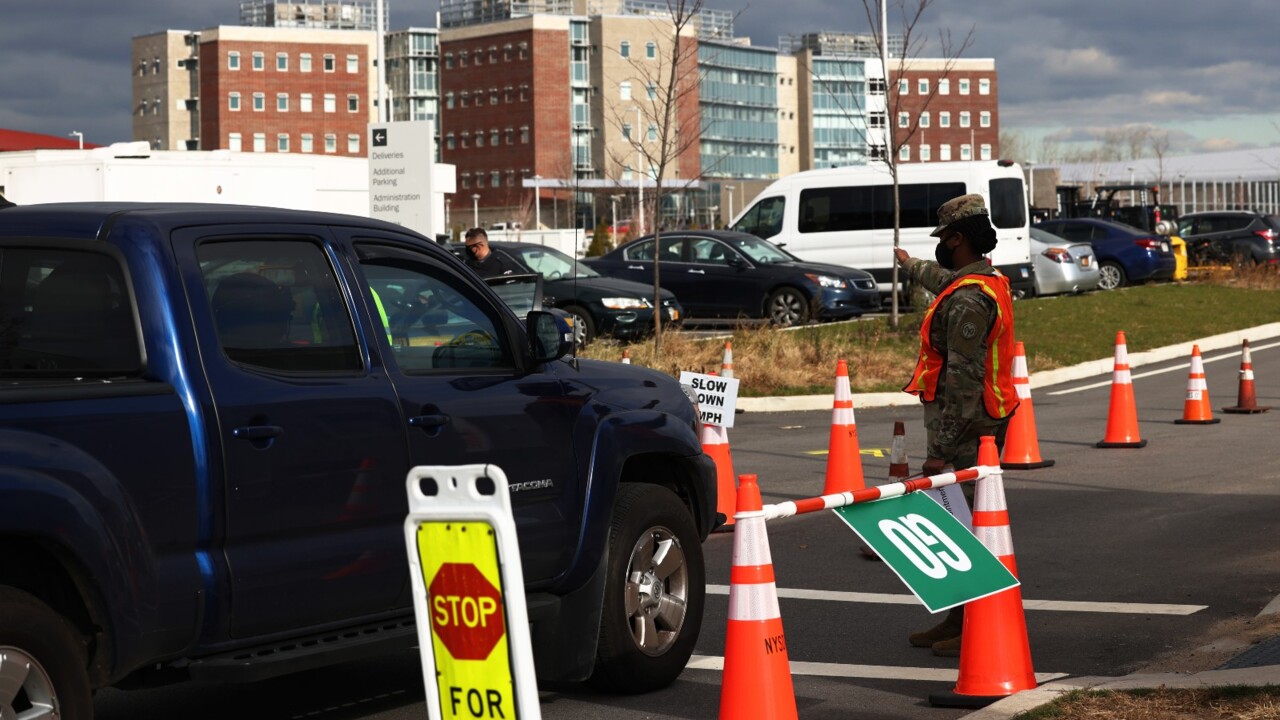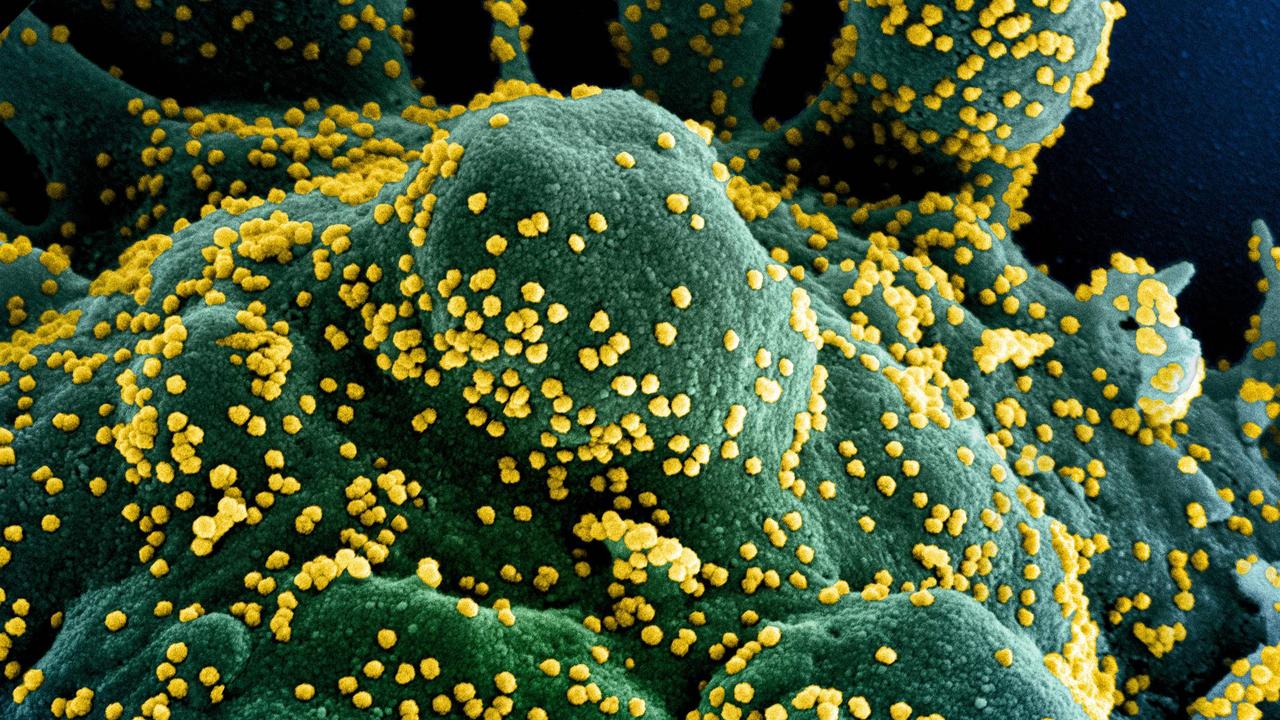New Covid variant BA.2 could be worse than predecessors for public health, study warns
A Covid-19 expert has called new laboratory work out of Japan “seriously bad news”, despite the pandemic retreating in most parts of the world.

Experts are worried a new subvariant of Omicron could see a devastating surge in infections and deaths around the world just as the pandemic appears to be retreating.
Eric Feigl-Ding, a Harvard-trained epidemiologist who was among the first researchers to sound the alarm about the seriousness of Covid-19, wrote that the subvariant — BA.2 — is “seriously bad news”.
“Even the World Health Organisation is getting very concerned about BA.2 variant outcompeting and displacing old Omicron,” he wrote on social media.
He wrote that news out of Denmark, where the subvariant represents 90 per cent of all new cases, suggests it is having significant health impacts.
“Here is what is happening in the country with the most BA.2 variant so far. (Denmark) has been BA.2 dominant for weeks and have now almost no mitigations either … now their excess deaths are spiking again.”
Dr Feigl-Ding shared a table showing the gap between those dying because of Covid-19 and those simply dying with the virus was widening, and a separate graph from John Hopkins University, shared last week, that showed a major surge in deaths since November 1, 2020.
Stream the latest news on COVID-19 with Flash. 25+ news channels in 1 place. New to Flash? Try 14 days free now>
8) here is what is happening in the country with the most #BA2 variant so far.., 🇩🇰 has been BA2 dominant for weeks and have now almost no mitigations either… now their excess deaths are spiking again… https://t.co/tAV4u277Ol
— Eric Feigl-Ding (@DrEricDing) February 19, 2022
Maria Van Kerkhove, the World Health Organisation’s Technical Lead on Covid-19, spoke along similar lines.
“We already know that Omicron has a growth advantage … compared to other variants of concern. But we know that BA.2 has a growth advantage even over BA.1.”
“This virus continues to be dangerous. This virus transmits very efficiently between people but there’s a lot that you can do.
“We need to drive transmission down. Because if we don’t, we will not only see more cases, more hospitalisations, more deaths, but we will see more people suffering from Long Covid and we will see more opportunities for new variants to emerge.
“So it’s a very dangerous situation that we’re in, three years in.”
After an Omicron surge that lasted for three-and-a-half months, the average number of global daily cases dropped for a third week in a row last week, falling back by 22 per cent to 1.97 million
But lab work out of Japan reveals there is still some cause for concern.
A study led by Kei Sato from the University of Tokyo was posted online on Wednesday but has not yet been peer reviewed.

In the study, which exposed hamsters to different variants, Sato writes: “The viral RNA load in the lung periphery and histopathological disorders of BA.2 were more severe than those of BA.1 and even B.1.1.
“Together with a higher effective reproduction number and pronounced immune resistance of BA.2, it is evident that the spread of BA.2 can be a serious issue for global health in the near future.
“In summary, our data suggests the possibility that BA.2 would be the most concerning variant to global health. Currently, both BA.2 and BA.1 are recognised together as Omicron and these are almost undistinguishable.
“Based on our findings, we propose that BA.2 should be recognised as a unique variant of concern, and this SARS-CoV-2 variant should be monitored in depth.”
Sato told CNN the subvariant needs to be more closely monitored.
The news comes as the situation improved in most regions of the world over the past seven days.
The number of daily cases dropped by 43 per cent in the United States and Canada, by 35 per cent in the Middle East, by 23 per cent in Europe and the Latin America/Caribbean area and by 22 per cent in Africa.
The situation remained almost stable in Asia, with a one per cent fall in cases. They increased by the same amount in Oceania.
South East Asia and Oceania saw the biggest spike in the number of new cases this week.
New Zealand registered the biggest increase of 239 per cent, followed by Hong Kong (192 per cent increase), Malaysia (111 per cent more), Vietnam (plus 78 per cent) and South Korea (up 66 per cent).

Sweden saw the biggest drop of the week with 78 per cent fewer cases, followed by Kazakhstan (minus 59 per cent), Kosovo (minus 57 per cent), Colombia (minus 55 per cent) and Suriname (minus 54 per cent).
Russia this week overtook the US to register the highest number of new cases with an average of 187,500 infections a day, an increase of six per cent.
The US fell to third place, with 119,600 cases per day — a 44 per cent drop — well behind Germany with 180,900 cases, a decrease of six per cent.
On a per capita basis, the country with the most new cases over the week was again Denmark with 5,026 cases per 100,000 inhabitants, followed by Latvia with 3,635, the Netherlands (2,877), Georgia (2,851) and Estonia (2,777).
Some researchers suggest that Denmark is seeing a surge because it has a high number of BA.2 cases.
8) here is what is happening in the country with the most #BA2 variant so far.., 🇩🇰 has been BA2 dominant for weeks and have now almost no mitigations either… now their excess deaths are spiking again… https://t.co/tAV4u277Ol
— Eric Feigl-Ding (@DrEricDing) February 19, 2022
The number of Covid-linked deaths declined by seven per cent globally, with an average of 10,355 per day, after an increase for five weeks in a row.
Even though the highly contagious Omicron variant led at its peak to four times more daily infections than previous waves, daily deaths remain far lower than their record high in January 2021 when they skirted 15,000.
The US again mourned the most deaths this week with an average of 2,300 per day, ahead of Brazil (841) and Russia (726).
The countries reporting the highest death rates in proportion to their population were all in the Balkans or the Caucasus with Bulgaria and Bosnia mourning nine deaths per 100,000 inhabitants, followed by Croatia on 8.5, Georgia (8.1) and Northern Macedonia (7.9).
— with AFP




